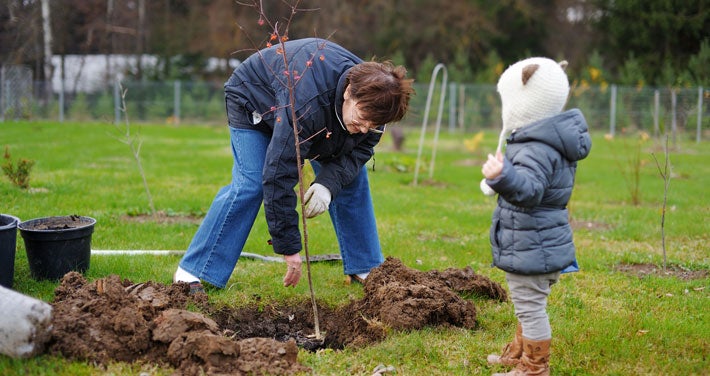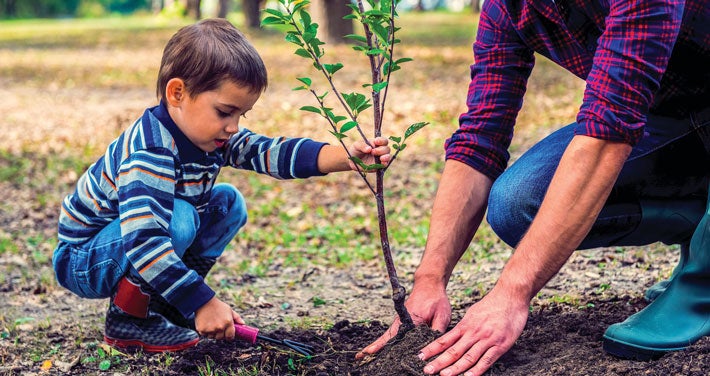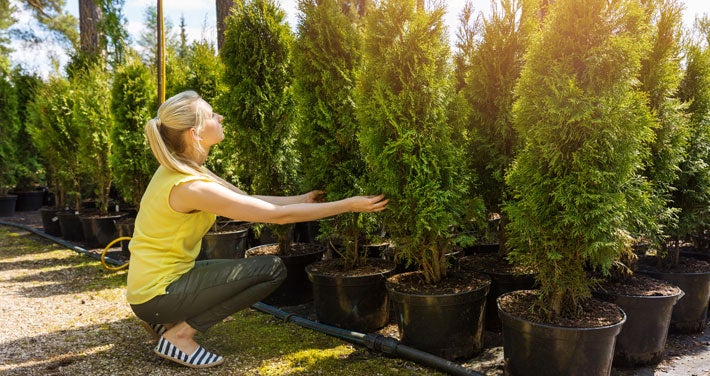The first few days of spring bring gardeners high hopes for the season ahead, and if you pay a visit to your local nursery, it’s easy to get swept up in the excitement of planting. Since a healthy tree can live 200 years or more, it’s important to carefully consider site selection. Read on to learn more about how to decide where to plant a tree – and how to give it the best chance to thrive in its new environment.
Consider This
There are many considerations in selecting an appropriate site for your tree. First, think about why you want to plant a tree in the first place – is it simply to add curb appeal and beautify the landscape, or are you also hoping to take advantage of the potential energy savings?
Planted on the north side of your home, a row of evergreens can serve as a windbreak to shelter your home from the cold winds of winter. Deciduous trees, planted on the east and west sides of your home, can significantly reduce summer cooling costs by shading the areas where most solar energy enters your house. Providing shade to a central air-conditioning unit will increase its efficiency and can further cut cooling costs.
Here are some additional factors to consider in choosing a location for your tree:
- Situate the tree at least 25 feet from overhead utility lines. Contact between power lines and vegetation can cause service interruptions, and your tree will eventually need to be pruned to maintain safe clearance from wires. Pruning can result in an unnatural appearance, and could potentially shorten the life of your tree.
- Consider the mature size of the tree. That 20-inch sapling won’t stay that size forever, so it’s important to choose a site that will not only allow the new tree to thrive, but also minimize its impact on existing trees. Select a location that takes into account the tree’s full growth potential.
- Don’t forget about underground utilities. There’s more to a tree than what you see above ground – in fact, the root system can be even larger than the spread of the branches. Roots that come in contact with underground water, gas, and electric lines can be damaged in the event that the lines are dug up for repair or replacement, but the greatest danger to underground lines occurs during planting. Never assume that the utilities are buried deeper than you plan to dig, and always notify Dig Safe at digsafe.com or by calling 811 to identify the location of utilities at least 3 business days before planting. Learn more about the free DigSafe process here.
Most homeowners spend a great deal of time and energy choosing a tree and preparing to plant it, but give little thought as to where the tree is planted. Beyond consideration of the tree’s light and drainage requirements, it’s important to understand the space the tree will require at maturity, and whether that will eventually affect overhead wires or underground utilities – or even the enjoyment you derive from your outdoor space.
Did you know that Unitil works with certified arborists and tree services to maintain the vegetation within their service area?





